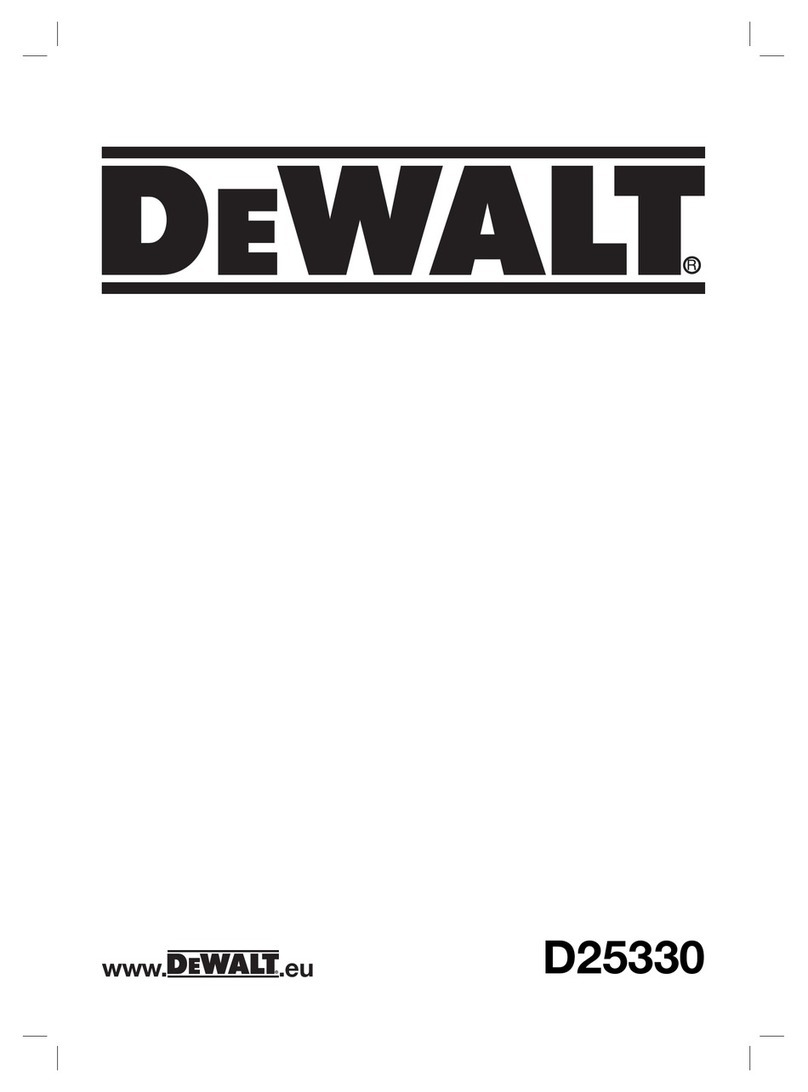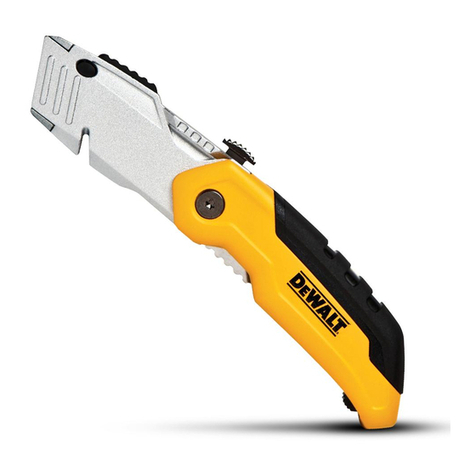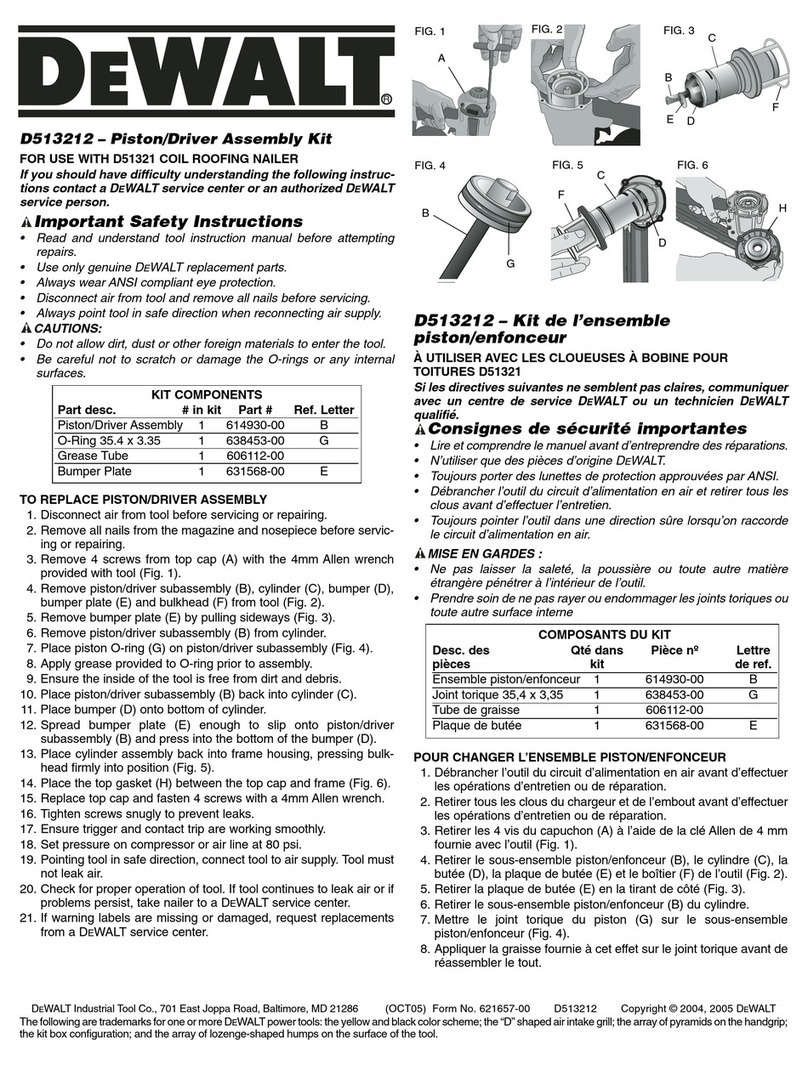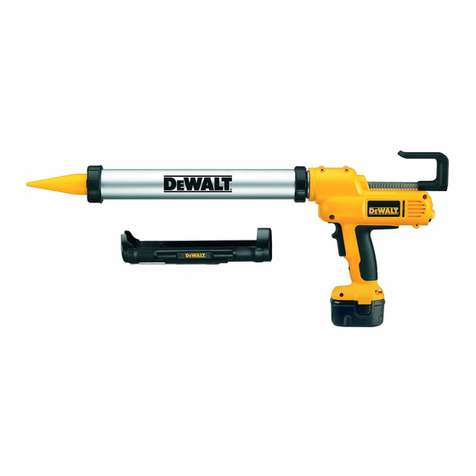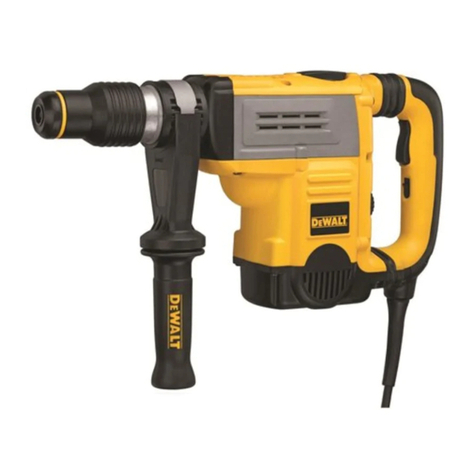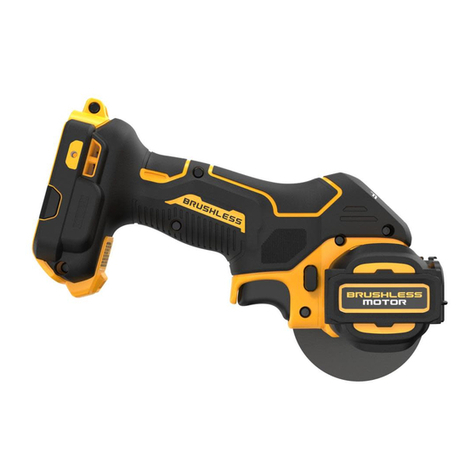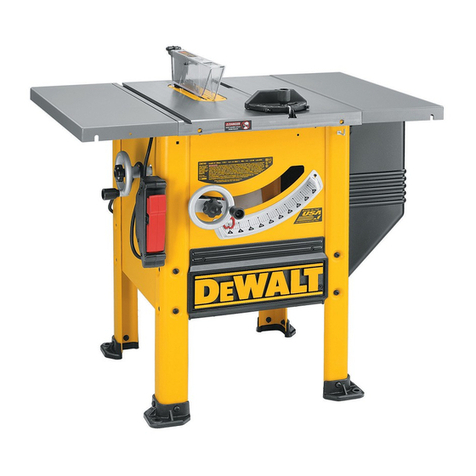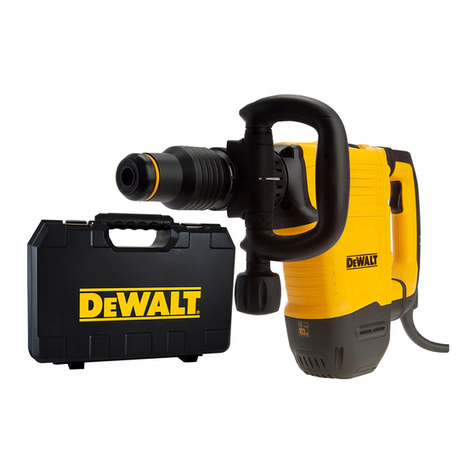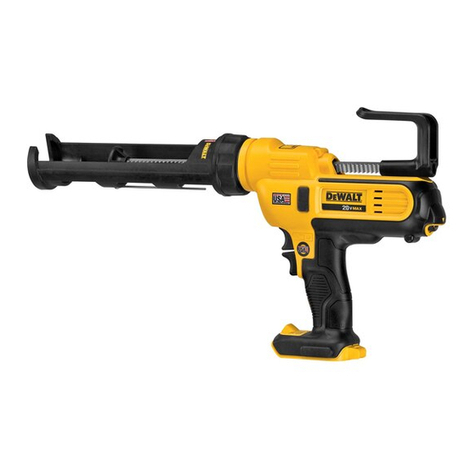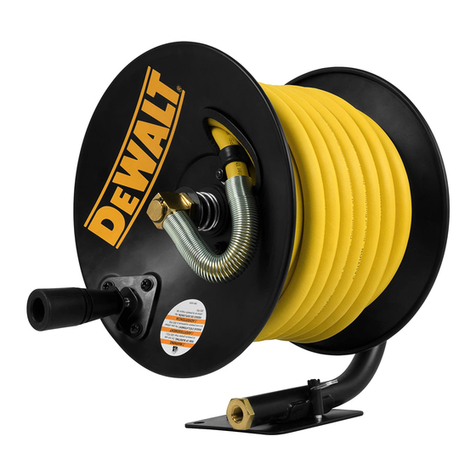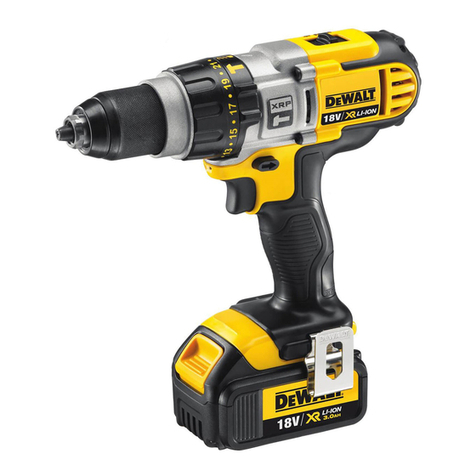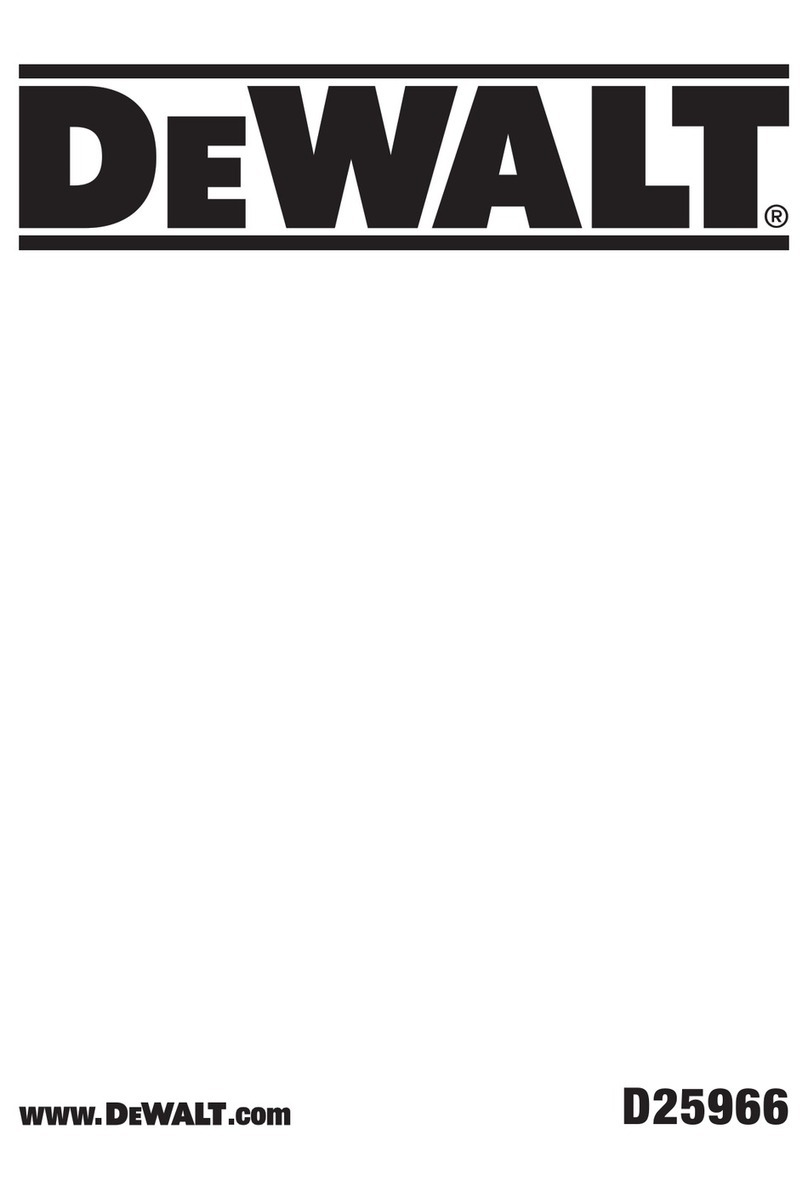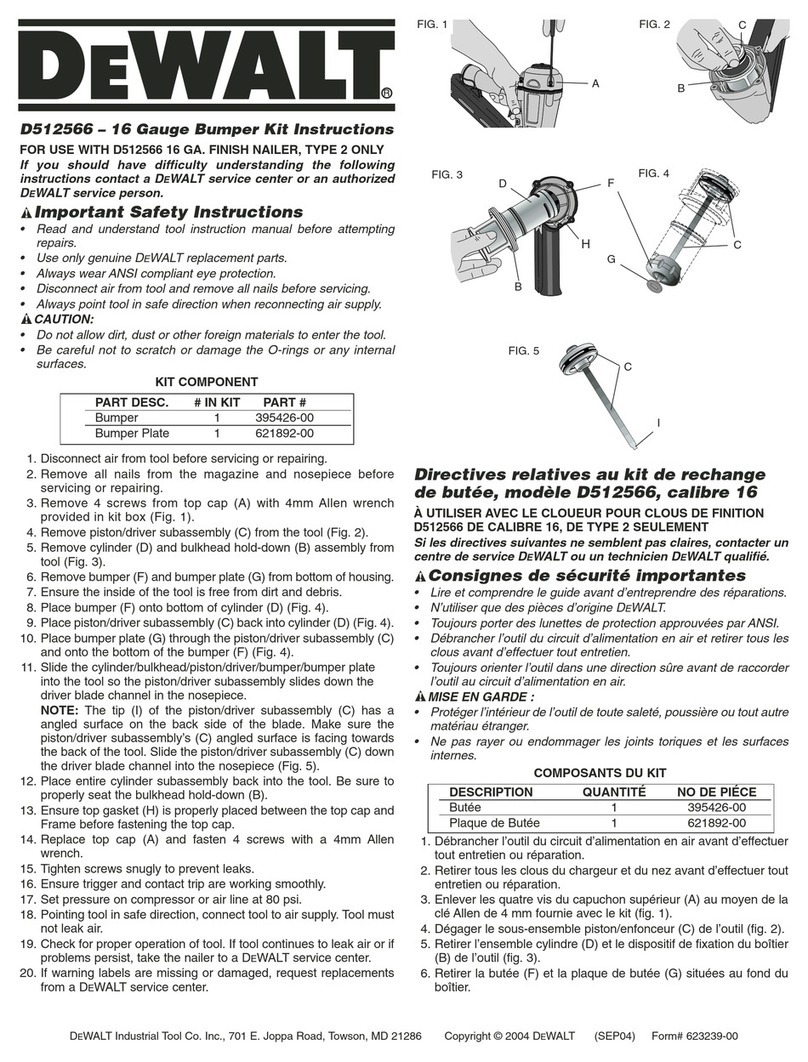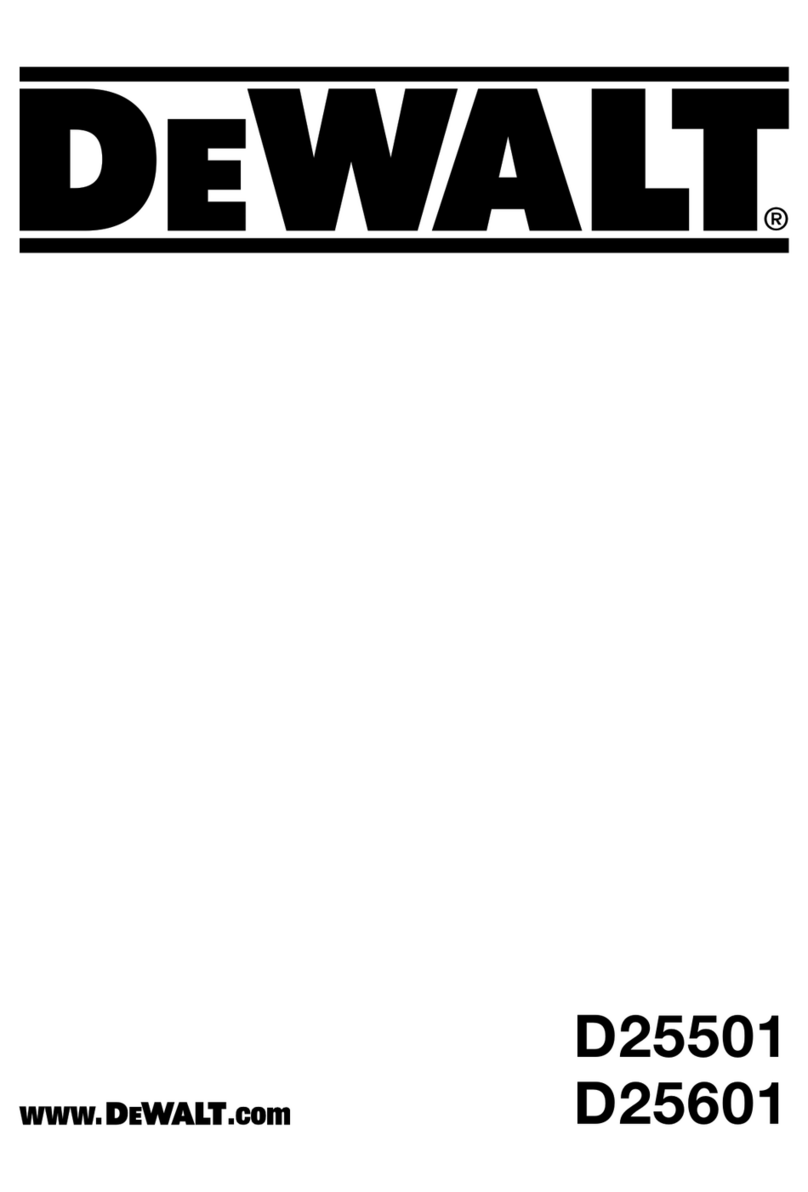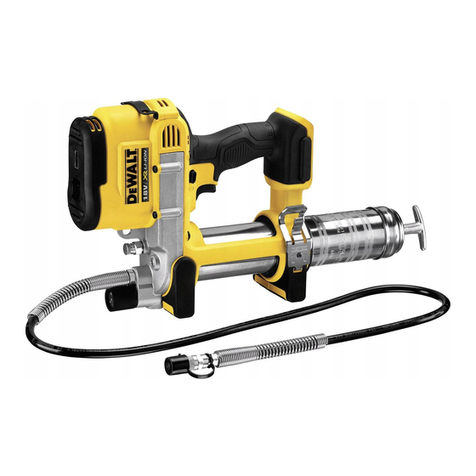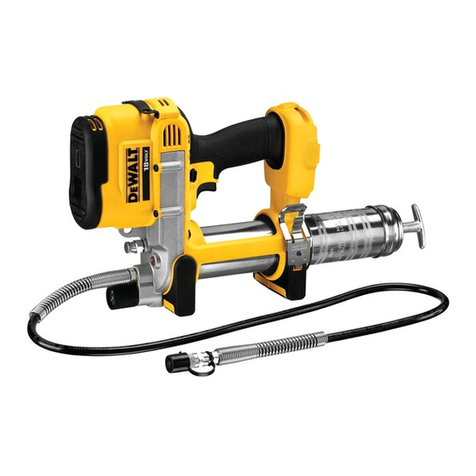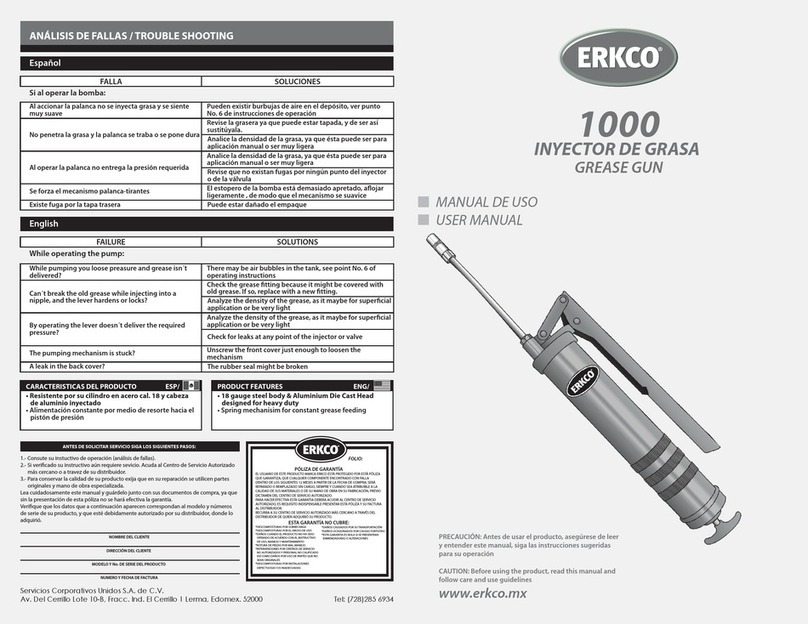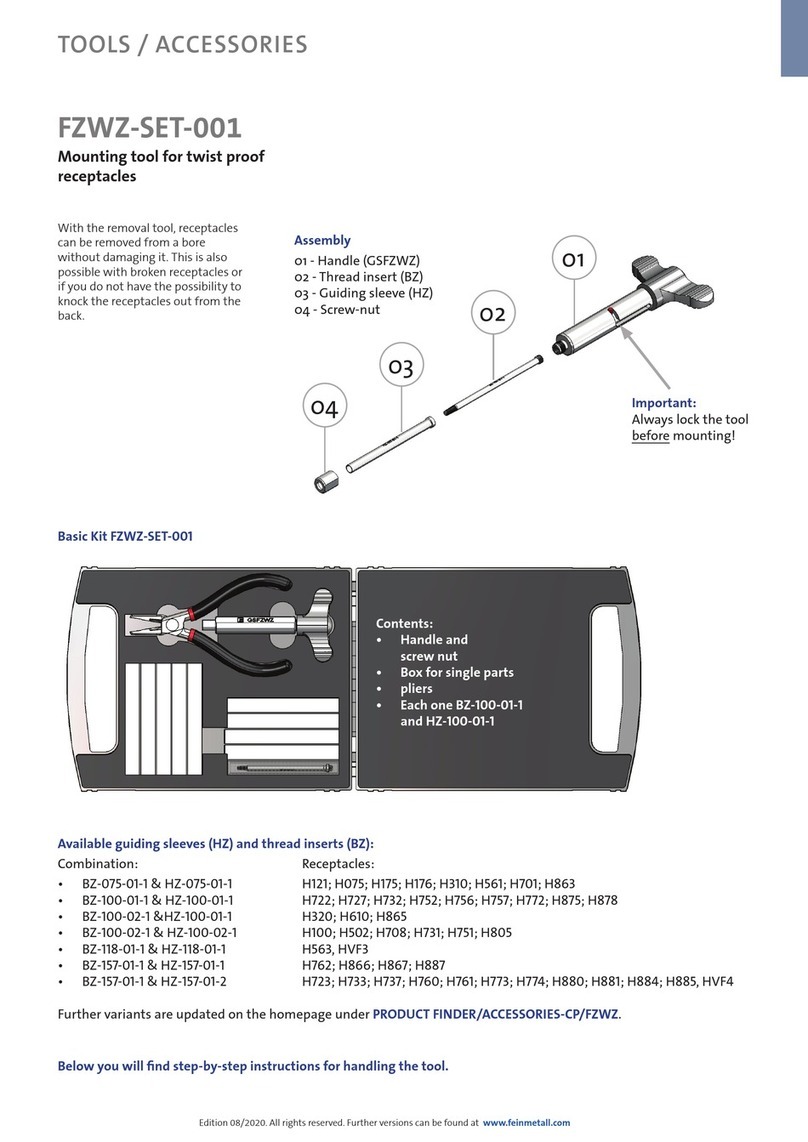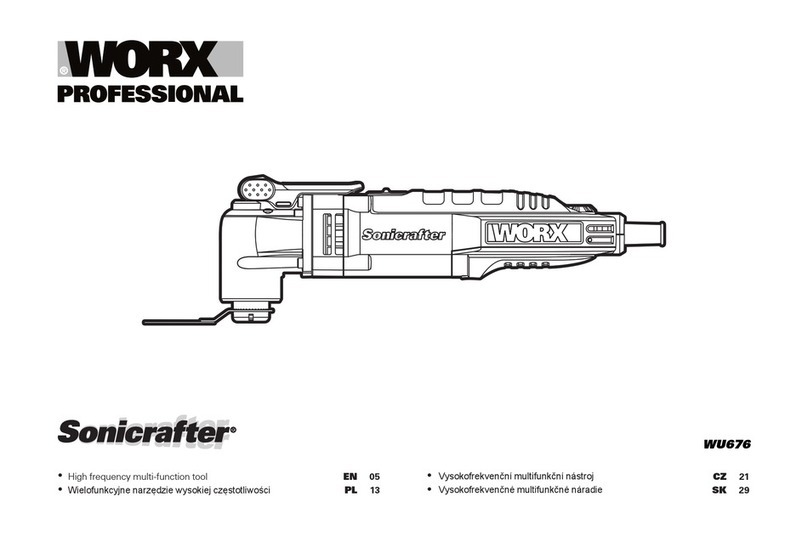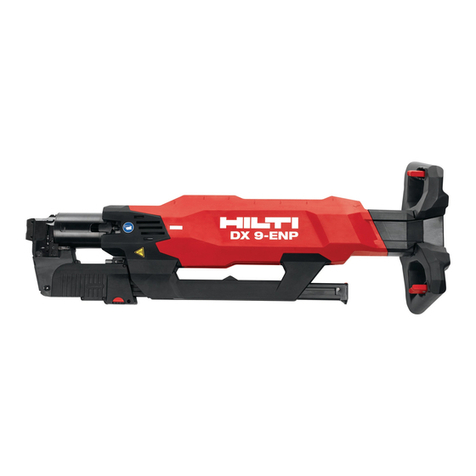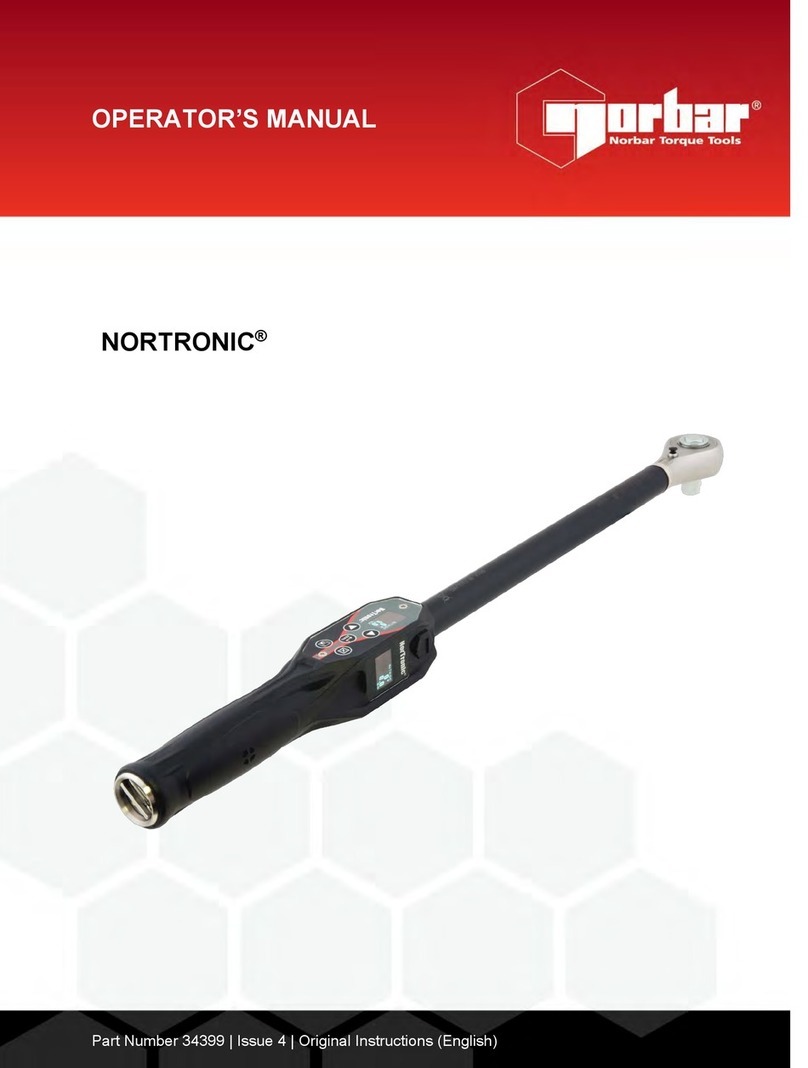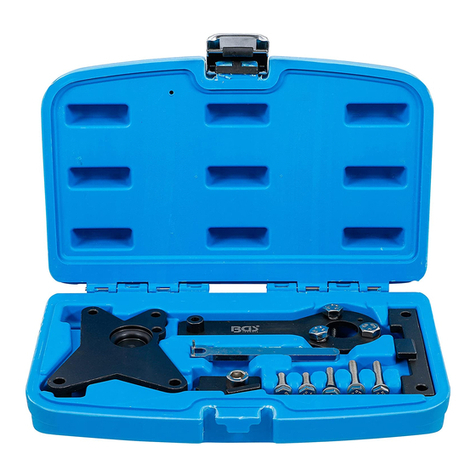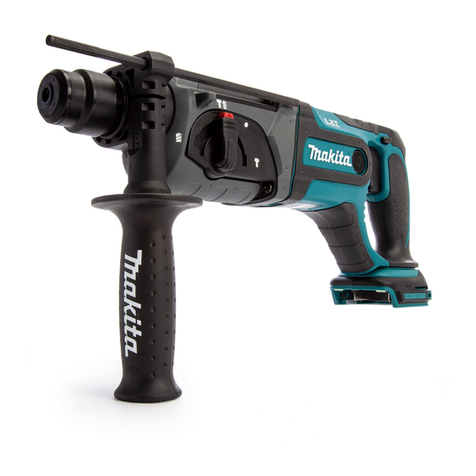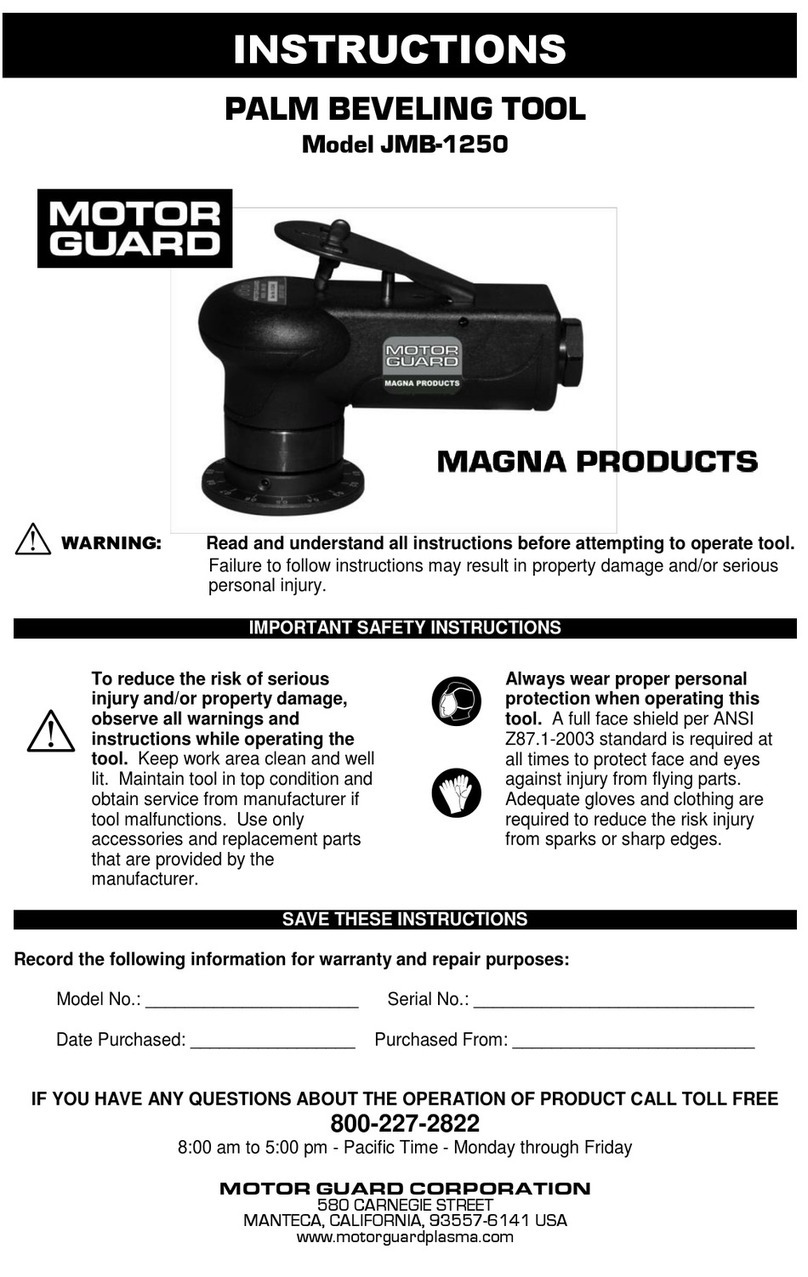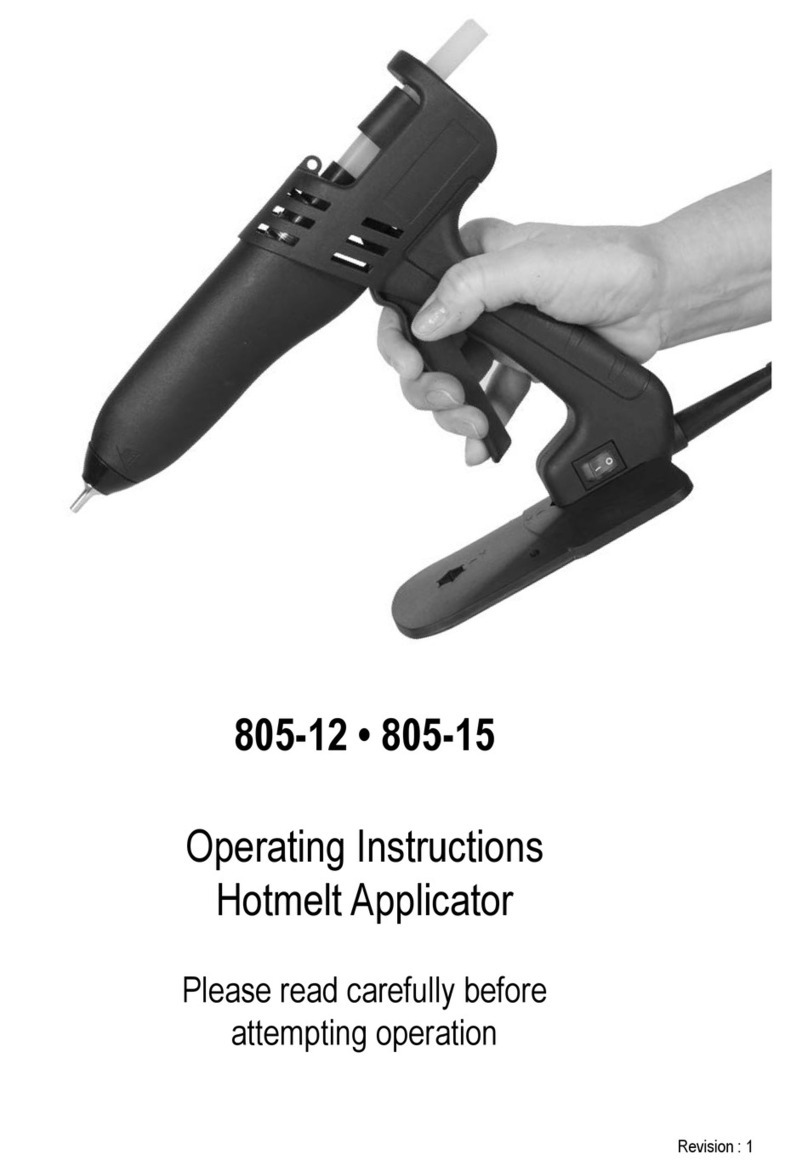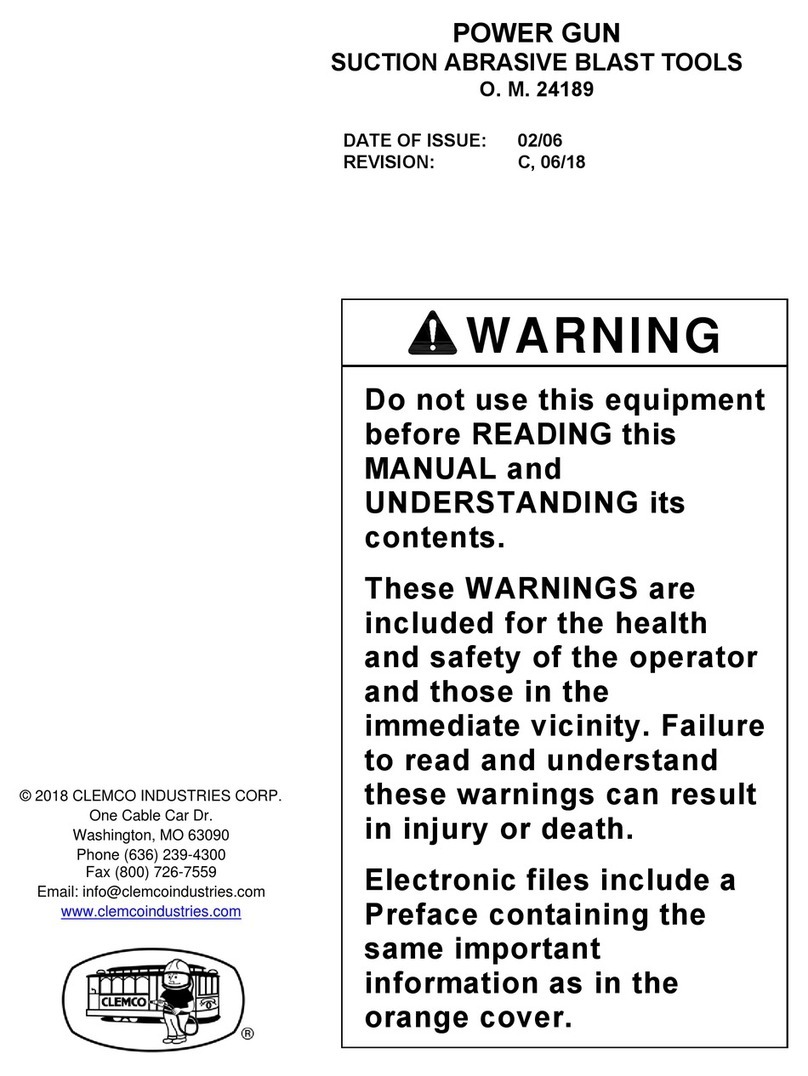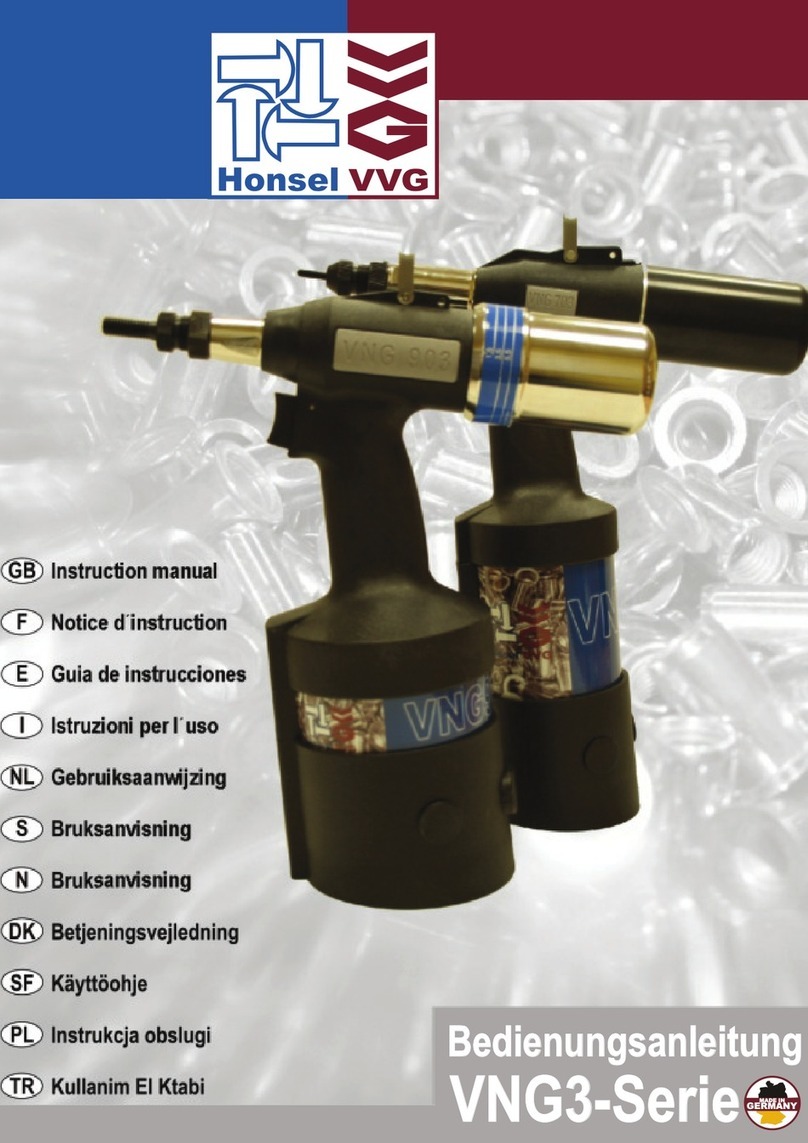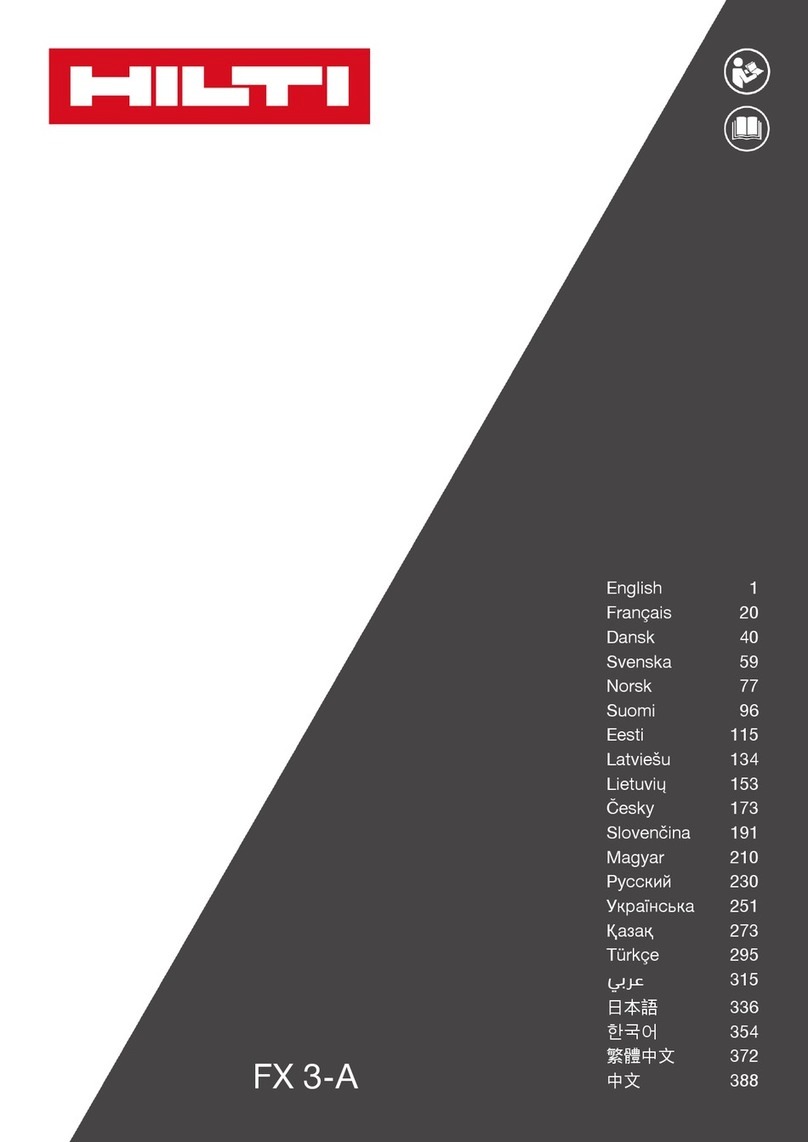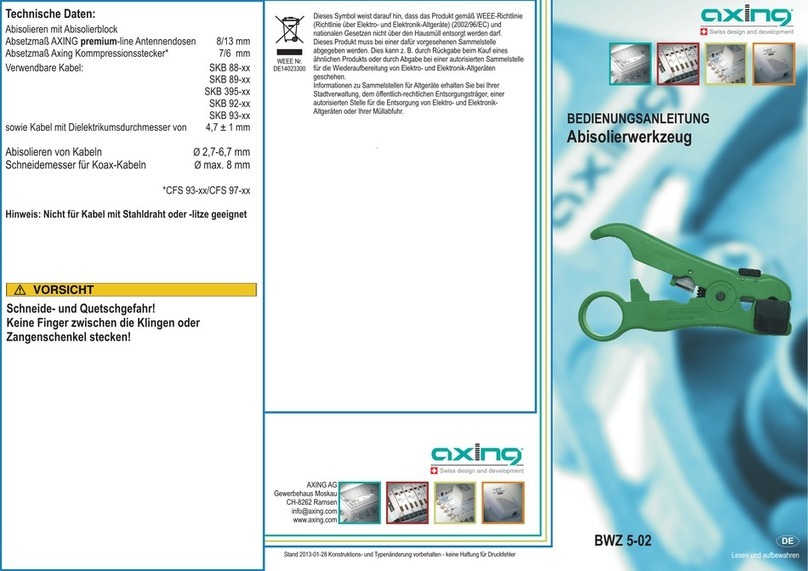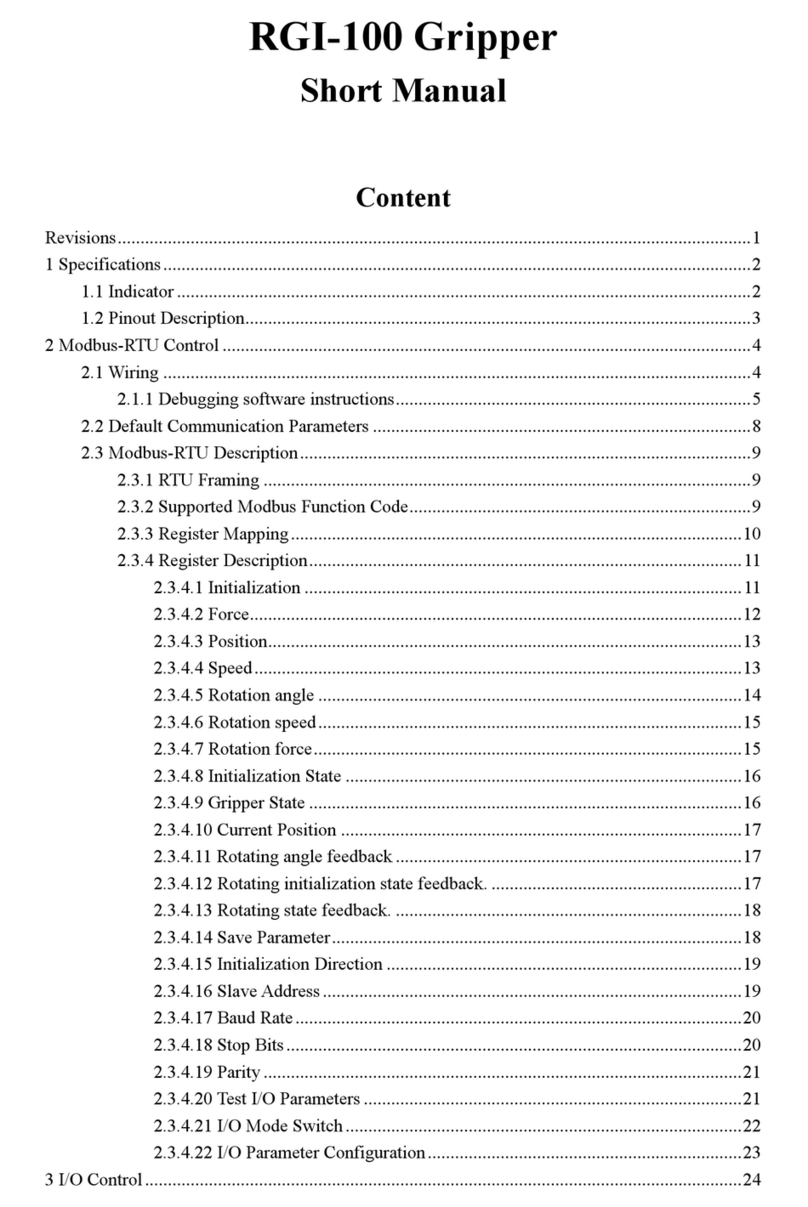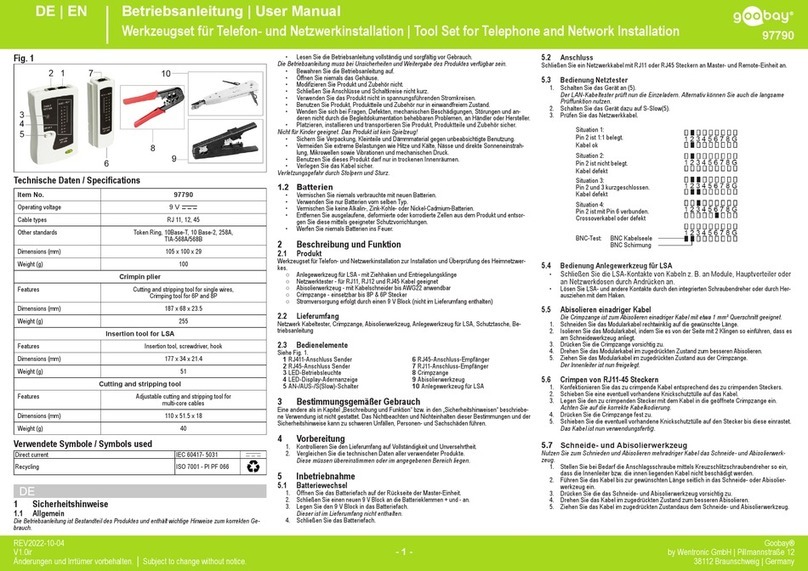
EnglishEnglish
1514
INSPECTION
WARNING:
Keep the tool lanyard clean and free
of debris. Clean with a damp cloth and mild soap,
wipe of excess and thoroughly dry. Do not use
solvents.
DANGER:
Tool lanyard must never be used for
Fall Protection of any kind. Extreme caution must
be taken when operating or working near active
machinery.
a ) A visual inspection is essential before using any
DEWALT equipment.
b ) Before each use, make sure you find no signs of cuts,
wear, discoloration, corrosion, etc. When in doubt, the
equipment should be replaced.
c ) Do not use this equipment beyond its weight limit.
d ) Always check the connection before each use.
e ) Tool lanyard that has been used to arrest a falling
tool should be taken out of service. Always check the
connection before each use.
f ) Do not alter or use in a manner other than as
instructed in this manual.
WARNING:
After every use or if the tool lanyard
has arrested a tool fall, the tool lanyard should be
checked by a competent person. If deemed not t
for use, it should be immediately removed from
use.
DON’Ts
a ) For tools weighing more than 5 lbs.(2.26 kg.), do not
tether such tool to the human body.
b ) Do not wrap tool lanyard around sharp or rough
edges.
c ) Never modify or alter tool lanyard.
d ) Never modify a tool or primary anchoring location.
e ) Never tie a knot in a tool lanyard.
f ) Never wrap the tool lanyard back to itself, unless
specifically instructed.
g ) Do not attach more than one Tool to each Lanyard (
or lanyard leg).
h ) Do not use this product if it interferes with the tool's
safe working condition, or the anchoring location -
including personal fall protection.
i ) Tool lanyard must not be used as hoisting taglines or
used to statically suspend tools and equipment.
j ) Never cinch the cord or carabiner around wrist.
k ) If not able to find a suitable connection point on the
tool, do not connect the lanyard.
WARNING:
Whatever combination you use,
make sure that it does not interfere with the safe
use of the tool.
WARNING:
Use only with suitable compliant
lanyards (not with cables or ropes) that employ
Dual Action Carabiner(s) with Captive Eye.
MAINTENANCE AND CLEANING
a ) Proper care is important for maintaining the
safety and longevity of the tool lanyard. Before and
after each use, remove all dirt, corrosives, and other
contaminants from the DEWALT Tool Lanyard.
STORAGE AND TRANSPORTATION
a ) When not in use, store equipment where it will not be
affected by heat, light, excessive moisture, chemicals,
or other corrosive elements.
b ) The product should be kept and transported in its
original packaging or in airtight packaging.
DISPOSAL
a ) If any wear or damage is observed, the product
must be removed from service and destroyed. Using
scissors, cut the textile to dismantle it.
a ) Do not wrap lanyard around sharp or rough edges.
Tool lanyard should not be used with blades, knives,
etc.
a ) Manufacturer's logo
b ) Product category
c ) Product name
d ) Model number
e ) Material of construction
f ) Relevant standards
PRODUCT LABEL
Product label has the following information:
DISCLAIMER: Prior to use the end user must read and
understand the manufacturer’s instructions supplied with
this product at the time of shipment and seek training from
their employer’s trained personnel on the proper usage of the
product. Manufacturer is not liable or responsible for any loss,
damage or injury caused or incurred by any person on grounds
of improper usage or installation of this product.
g ) Serial number
h ) Batch number
i ) Date of manufacture
j ) Load capacity
k ) Relaxed length
l ) Max. expanded length
WARNING:
Do not attempt to disassemble the
unit or make repairs to the equipment. Send the
equipment back to the manufacturer, or person or
entities authorized in writing by the manufacturer
to make repairs to the equipment.
WARNING:
The user must weigh the tool to
be tethered to ensure they do not exceed the
maximum safe working capacity of the tool
lanyard or any part of the tethering system. User
should also refer to the label or user manual for
information on maximum capacity. LIFESPAN: The estimated product Lifespan depends if the
product passes the pre use inspection and periodic inspection
by competent person. The following factors can reduce the
Lifespan of the product: intense use, contact with chemical
substances, especially aggressive environments, extreme
temperature exposure, UV exposure, abrasions, cuts, violent
impacts, bad use or maintenance.


